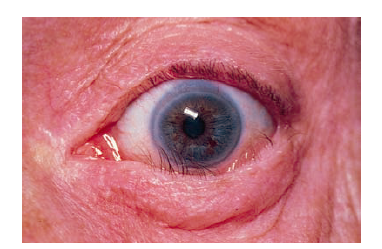Makindo Medical Notes"One small step for man, one large step for Makindo" |
|
|---|---|
| Download all this content in the Apps now Android App and Apple iPhone/Pad App | |
| MEDICAL DISCLAIMER: The contents are under continuing development and improvements and despite all efforts may contain errors of omission or fact. This is not to be used for the assessment, diagnosis, or management of patients. It should not be regarded as medical advice by healthcare workers or laypeople. It is for educational purposes only. Please adhere to your local protocols. Use the BNF for drug information. If you are unwell please seek urgent healthcare advice. If you do not accept this then please do not use the website. Makindo Ltd. |
Entropion
-
| About | Anaesthetics and Critical Care | Anatomy | Biochemistry | Cardiology | Clinical Cases | CompSci | Crib | Dermatology | Differentials | Drugs | ENT | Electrocardiogram | Embryology | Emergency Medicine | Endocrinology | Ethics | Foundation Doctors | Gastroenterology | General Information | General Practice | Genetics | Geriatric Medicine | Guidelines | Haematology | Hepatology | Immunology | Infectious Diseases | Infographic | Investigations | Lists | Microbiology | Miscellaneous | Nephrology | Neuroanatomy | Neurology | Nutrition | OSCE | Obstetrics Gynaecology | Oncology | Ophthalmology | Oral Medicine and Dentistry | Paediatrics | Palliative | Pathology | Pharmacology | Physiology | Procedures | Psychiatry | Radiology | Respiratory | Resuscitation | Rheumatology | Statistics and Research | Stroke | Surgery | Toxicology | Trauma and Orthopaedics | Twitter | Urology
Entropion 👁️
Entropion is a condition where the eyelid—usually the lower one—turns inward, causing the eyelashes and skin to rub against the eye surface. This can lead to irritation, discomfort, and potential corneal damage. Entropion may be age-related, or due to conjunctival scarring from previous chemical injury, trauma, surgery, or systemic conditions such as Stevens–Johnson syndrome. Surgery may be required to reposition the eyelid. ⚠️
Causes of Entropion 🔍
- Age-related changes 🧓: Most common cause—weakening of eyelid retractors and supporting tissues.
- Scarring 🩹: Prior injuries, surgeries, chemical burns, trachoma, or cicatrizing conjunctivitis pull the lid inward.
- Inflammation or infection 🦠: Chronic blepharitis or conjunctival inflammation can alter lid position.
- Congenital 👶: Present from birth due to anatomical variation of the eyelid.
- Muscle spasm 💢: Orbicularis oculi spasm can cause transient entropion (spastic entropion).

Symptoms of Entropion 📋
- Irritation, gritty sensation, and redness 👀.
- Watery eyes (epiphora) 💧 due to reflex tearing.
- Photophobia and wind sensitivity 🌬️.
- Foreign body sensation 🪶 from lashes rubbing the cornea.
- Blurred vision if the cornea is abraded or ulcerated 🌫️.
- Crusting of the eyelid and mucous discharge 🧼.
Diagnosis of Entropion 🧪
- Clinical examination 🧑⚕️: Eversion tests, lid distraction, snap-back test, assessment of horizontal laxity and retractor function.
- Slit-lamp examination 🔬: Inspect cornea for punctate erosions/abrasions; fluorescein staining under blue light.
- Medical history 📚: Prior surgery, trauma, chemical injury, chronic blepharitis, cicatrizing conditions (e.g., SJS, OCP).
Treatment Options for Entropion 🛠️
- Urgent ⏱️: A corneal ulcer or infectious keratitis (white corneal opacity/ulcer) requires immediate eyelid taping to protect the cornea, intensive antimicrobial therapy as per corneal ulcer protocols, and urgent ophthalmology review.
- Non-surgical treatments 🧴:
- Lubricating drops/ointments 💧: Protect cornea and reduce friction.
- Botulinum toxin (Botox) 💉: Temporarily weakens orbicularis to evert the lid (helpful in spastic/early involutional cases).
- Skin tape 🩹: Temporary outward traction of the lower lid.
- Bandage soft contact lens 👁️🗨️: Shields cornea from lash trauma.
- Surgical treatments 🏥:
- Everting (Quickert) sutures 🧵: Short procedure that rotates the lid margin outward.
- Lower lid retractor reinsertion/tightening 🔧: Addresses disinsertion/attenuation of retractors.
- Lateral tarsal strip (LTS) 📐: Corrects horizontal laxity; often combined with retractor repair.
- Full-thickness wedge resection ✂️: Shortens the lid in severe laxity.
- Skin grafts or mucous membrane grafts 🧫: For cicatricial entropion to lengthen the posterior lamella.
Complications of Untreated Entropion ⚠️
- Recurrent corneal abrasions and epithelial defects 🩸.
- Microbial keratitis and corneal ulceration 🦠.
- Corneal scarring and neovascularization → permanent visual impairment 👓.
- Chronic pain, photophobia, and reduced quality of life 😣.
Prevention and Ongoing Management 🛡️
- Regular eye examinations for older adults or patients with cicatrizing disease 📆.
- Eye protection and prompt care after chemical/thermal injuries 🧯.
- Control of chronic blepharitis/meibomian gland dysfunction (lid hygiene, warm compresses) 🧼🔥.
- Use lubricants to minimize corneal microtrauma while awaiting definitive surgery 💧.
Summary ✅
Entropion is an inward turning of the eyelid that causes lash–cornea contact, leading to irritation and potential sight-threatening complications. Early recognition, ocular surface protection, and timely surgical correction prevent corneal damage and restore comfort and vision. 👁️✨